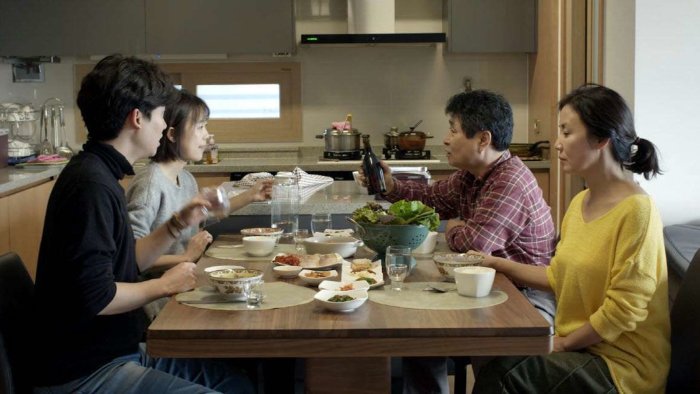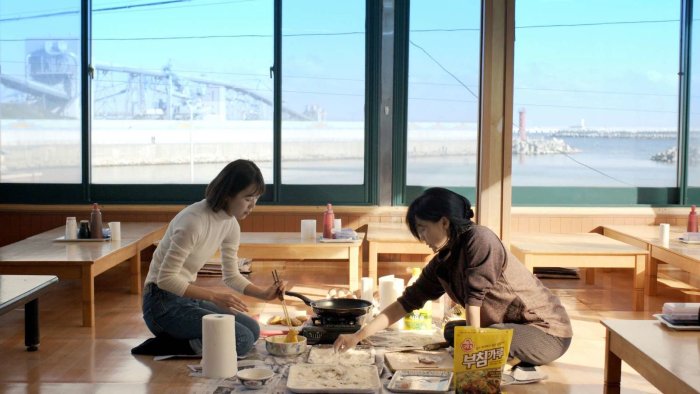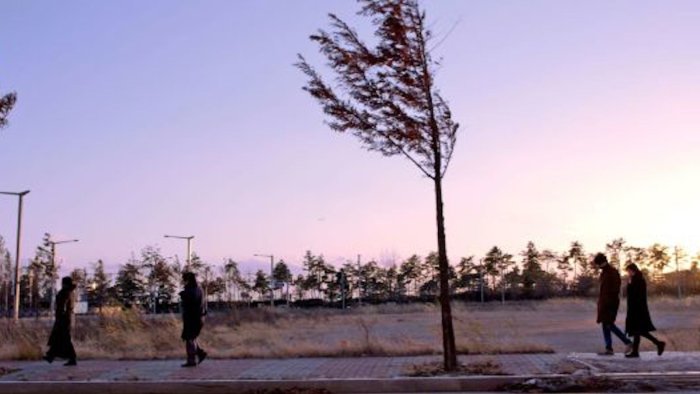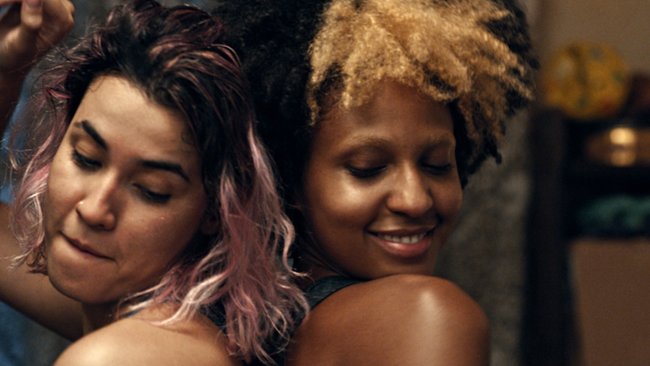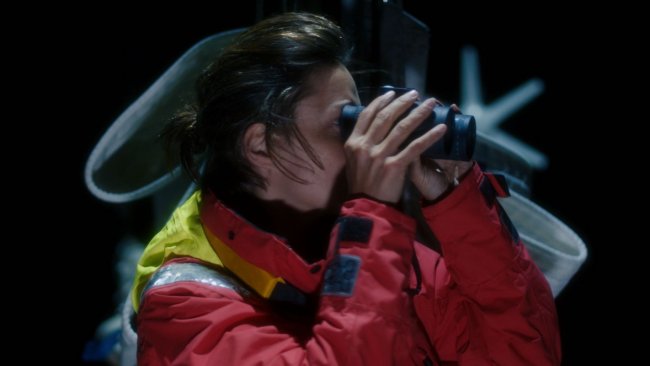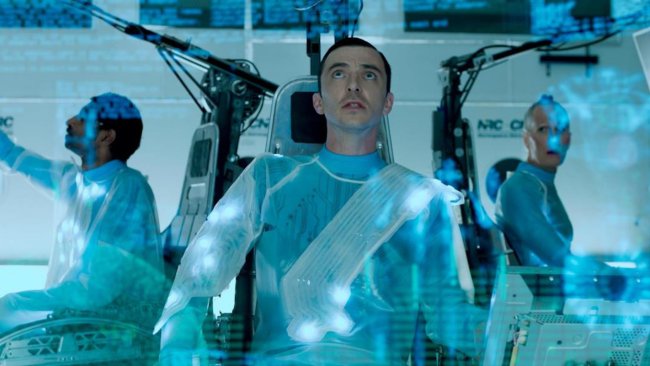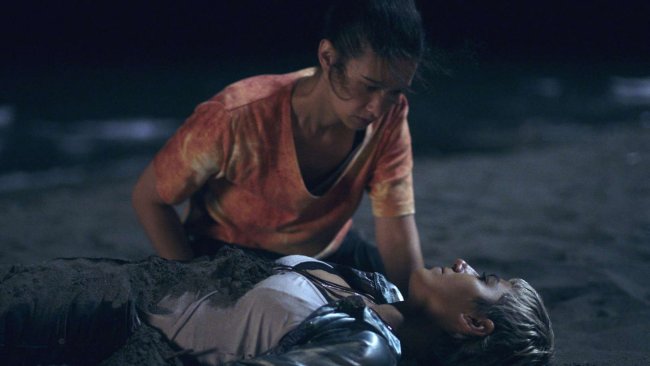Cho-haeng - First Lap
[…] We are often passengers accompanying the “something” and the “nothing”, riding around in the backseat of their hatchback, looking out at the city streets that could be any city, anywhere and everywhere.
[…] Dae-hwan instead, gently guides us through the film with a deliberate approach, making transparent his strategies and choices, not because he is a novice director, but more that he thoughtfully displays to us his sense of craft, and remains faithful to his choices at every moment.
Text: Jodie McNeilly
Cho-Haeng is a symmetrically formed portrait of two very different families: Ji-young’s (Kim Sae-byuk) city based middle-class parents, and Su-hyeon’s (Cho Hyun-chul) working-class family from the coast. Ji-young and Su-hyeon familial foundations are typically riddled with tension, generational misunderstanding, and disappointment, that set the couple adrift in a choppy sea of hesitation: will Ji-young renew her work contract and escape the precarity of employment? Will Su-hyeon, a painter of self-portraits, finally recognise himself as both subject and painter of his works, and find the right “concepts” to sell himself to a decent graduate school? Will they marry after 7 years and have this baby if Ji-young is pregnant? Dae-hwan invites us to feel and observe this hesitation with little resolve.
We feel it through the few scenes of concentrated and intimate dialogue between characters that slowly reveal the depth and complexity of their relation: we are never sure if Ji-young’s mother, desperate for her daughter to marry and have a child, could be happy at the prospect of a baby given her incumbent disapproval. It is a painful scene that subtly points to the absurdity of a push and pull dynamic universally felt between mothers and daughters.
We see it in the position of camera, our viewing always observational, passive, locked-off and steady, shifting between close and mid-range: reflections of psychological interiors, not meditative, but anxious in the character’s reticence. We are often passengers accompanying the “something” and the “nothing”, riding around in the backseat of their hatchback, looking out at the city streets that could be any city, anywhere and everywhere. In fact, there is little in the film that brings us to the specificity of location: a uniform effect of globalisation. We wander from City (Incheon) to the Sea (Samcheok) when Su-hyeon decides to visit his drunken and estranged father on his 60th birthday, peering through dirty windscreens and bobbing up and down on a fishing boat with an embodied perception of their lives.
The landscape appears familiar in its fusion of shiny buildings, maze of auto-routes, forests, and industrial scapes; the film is typically “a-cultural” except for the preparation and eating of food to which we are privy to in long drawn out scenes of cooking and eating. Meals bring the families together in harsh and awkward scenes. Ji-young barely survives the vitriolic attack of her mother at dinner, while Su-hyeon wishes to disappear once and for all from the table of his family vulgar with abuse, and to no longer wash up like a “corpse without head or limbs” on the beach of his childhood.
The spectre of money haunts the couple, as it does their parents. Ji-young’s mother a real estate agent fills her time packing and moving and decorating a room for Ji-young without consult or care – her latest conquest a large apartment with views of the City overlooking a golf course that Ji-young’ father, a government worker, will never afford to walk on. Financially aspiring in that petit-bourgeois way, he speaks to Su-hyeon about financing a new art institute, one that could operate like a mid-size corporation. Even art education cannot escape the market. The political unrest of 2017 with cries for impeaching President Park Guen-hye for financial corruption provides an indirect back-drop to the film, even ending in the large candlelight protest by hundreds of thousands in Central Seoul. It is a scene not actively marched by Ji-young and Su-hyeon, but one that sees them confusedly meander in their hesitation with joy – they seem to walk against the crowd whichever way they turn. While the political commentary is not overt, it is still present, thus meaningful in the wake of a government that had blacklisted many of its major artists.
Ji-young and Su-hyeon have the baby. We are made aware of this through a future scene that interrupts the linear timeline midway. This splice of time looks like any other day: same t-shirts, columns of packed boxes: moving in or out? They slurp noodles and kimchi from their bedroom floor, speaking of the fact that they no longer can afford to live in this neighbourhood and eat from this take-away. The scene ends with the scream of a baby and cry of, «she’s awake!». There is some discombobulation for the next few scenes until the timeline settles once again into its linear progression. We never hear the announcement, nor see the pregnancy or birth, just the fear and vulnerability of its very possibility. A fine strategy for allowing us some resolve before the film’s end, and for understanding their lives now cast with higher stakes.
The slowness of Cho-Haeng with its lengthy shots and content of everyday normalcy is certainly no Tarkovskian masterpiece when it comes to the use of time, nor does it engage one’s existential examination experienced with Jim Jarmusch’s use of repetition of an everyday routine over one week in his recent film Paterson (2016). Dae-hwan instead, gently guides us through the film with a deliberate approach, making transparent his strategies and choices, not because he is a novice director, but more that he thoughtfully displays to us his sense of craft, and remains faithful to his choices at every moment. The actors enable this vision with equal commitment; especially strong are the performances from the more experienced cast members.
This article contains a third-party video. If you would like to watch the video, please adjust your settings.
Info
Cho-Haeng - First Lap | Film | Kim Dae-hwan | KOR 2017 | 101’ | Locarno Festival 2017, Cinéma Bellevaux Lausanne
Prize for the Best Emerging Director (Kim Dae-hwan) at Locarno Festival 2017
First published: August 17, 2017
